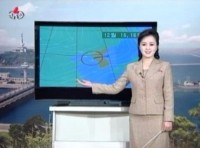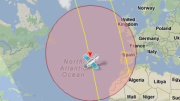 North Korean state media provided a little more information on Wednesday about the mission of the satellite it plans to launch in early April — if the scheduled launch is a satellite mission at all.
North Korean state media provided a little more information on Wednesday about the mission of the satellite it plans to launch in early April — if the scheduled launch is a satellite mission at all.
Based on the country’s previous two rocket launches, the overwhelming view in the international community is that the rocket launch is nothing more than a test firing of a long-range ballistic missile.
If the rocket really is putting a satellite into space, that should become clear shortly after launch when radar and space tracking stations pick up the satellite on the way into orbit.
Whatever the truth, the Korean Central News Agency continues to maintain the satellite line and has published an interview attributed to an official from the Space Development Department of the Korean Committee for Space Technology.
Question: What is the mission of Kwangmyongsong-3, first working satellite in the DPRK?
Answer: Kwangmyongsong-3 as an earth observation satellite will assess the distribution of forests and natural resources of the DPRK, the level of natural disaster, the crop estimate, etc. and collect data necessary for weather forecast, natural resources prospecting and others.
State media hadn’t previously reported on the mission of the satellite beyond saying it is an “earth observation satellite.” A few more details of the mission were included in a notification to the International Maritime Organization when the DPRK said the satellite will “broadcast remote data in the UHF band and video in the X-band.”
The interviewed continued:
Q: What is its capacity?
A: Kwangmyongsong-3 has video camera mounted on it and will send observation data including pictures to the General Satellite Control and Command Centre. It weighs 100kg and will circle along the solar synchronous orbit at 500km high altitude. Its life is two years.
The launch path of the rocket, from a new launch pad on the country’s west coast traveling directly south, would be consistent with the placing of a satellite into a polar orbit — that’s one in which the craft orbits from north to south over the Earth’s poles.
If this is indeed a satellite launch and it’s successfully placed into the orbit, the satellite would likely pass over North Korea several times a day providing video images. The passes would also send it over South Korea.
Q: The DPRK invited foreign experts and reporters to the satellite launch. What can they observe?
A: They will go to the Sohae Satellite Launching Station to witness carrier rocket Unha-3 on the launching pad and Kwangmyongsong-3. They will watch the preparation for the launch of the carrier rocket with satellite on it in the General Launch Command Centre. They will also visit the General Satellite Control and Command Centre in Pyongyang and see the satellite being launched in a relevant place.
We will organize special visits going beyond the international usage to show with transparency the peaceful, scientific and technological nature of the satellite.
There hasn’t been any announcement so far on who these experts are or will be. To-date no international organizations have acknowledged an invitation from the country.
One thing notable for its absence to-date from all the media coverage: a photograph of North Korean technicians working on the satellite’s construction.




